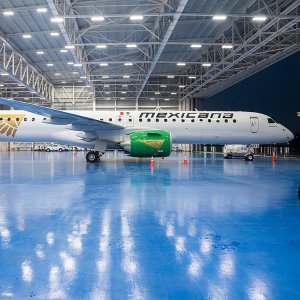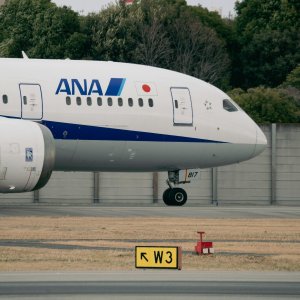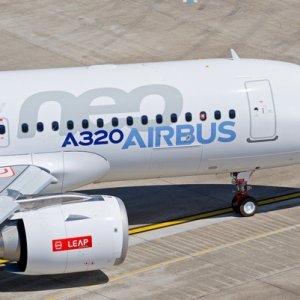Cluster Sees Opportunities Ahead as Supply Chains Face Disruption

STORY INLINE POST
Q: What have been the main advances regarding the cluster’s efforts to map the aerospace industry in Chihuahua and the rest of the country?
A: Chihuahua has incorporated many different capabilities throughout its more than 30 years working in the aerospace sector, which began with the manufacturing of harnesses. The industry took off in 2005, when companies such as Textron, Honeywell and Beechcraft came to the state. These companies helped build Chihuahua’s capabilities for machining and assembly and were followed by their suppliers, which focused on parts and finishes, among other processes. Today, while the state has broadly diversified, it has also specialized in the engineering, manufacturing and assembly of interiors at plants such as Safran Aerosystems, which has nine different business units. Recently, Safran announced a new plant for the cabins business division in the state to manufacture kitchenettes for Boeing.
The mapping of Mexico’s aerospace industry is being undertaken alongside FEMIA’s Supplier Development program and aims to identify available capabilities, products, assembling, machining and other market niches. Mexico’s aerospace capabilities have also evolved and specialized. While 15 years ago each state wanted to develop a broad range of capabilities, now each region is specializing, which helps them cater to the needs of larger companies while supporting the development of SMEs. This initiative is moving forward and even though it slowed down because of the COVID-19 outbreak, we hope it will be finished by the end of 2020.
Q: What initiatives is Chihuahua Aerospace Cluster developing to support SMEs wanting to enter the supply chain?
A: All of Mexico’s aerospace clusters are working toward the development of national suppliers. Two years ago, Chihuahua’s city and state governments introduced a program to identify key companies that could supply to the aerospace industry, allowing major aerospace companies to focus on the development of Mexico’s supplier base.
The cluster is working with FEMIA and NAFIN to develop essential financial support strategies for SMEs. New companies in the aerospace sector will need to import raw materials and pay them upfront with lead-times of up to 50 weeks. If we consider that raw materials cost from 50 percent to 75 percent of the final pricing an SME offers to a buyer, paying upfront for a 50-week lead-time is a real burden for SMEs. In addition to that, SMEs will have to wait for the logistics and customs lead-time and cost. Moreover, the payment terms of an SME’s clients range from 60 to 180 days. To face these significant expenses, SMEs need good financial options that can support them as they begin working for the aerospace industry. While the aerospace sector can support companies for decades, return on investment in the industry takes between seven and 10 years. To succeed, aerospace companies need long-term loans at very low interest rates, as the industry is competing against countries that offer annual interest rates below 3 percent, such as Malaysia, Morocco, Turkey and Romania. Aerospace companies need to invest in an annual AS9100 certification, further certifications from the OEM they will work with, advanced equipment and its maintenance.
Q: How are clusters creating a unified strategy that addresses the country’s needs?
A: OEMs only see a major cluster named Mexico, even though each region is specializing. FEMIA and the clusters of Queretaro, Nuevo Leon and Chihuahua are working together to develop training programs and find joint opportunities for each region. Over the past six years, Chihuahua built highly successful training programs for the aerospace industry that are now being used in other regions. Last year, the cluster developed an aeronautics certification program in aerospace quality systems along with Tec Milenio Chihuahua, which will now be extended to the rest of the country. This one-year program trains engineering students on all necessary quality procedures for aerospace companies and benefits both students and aerospace companies, as the latter will benefit from reducing training costs.
The sector needs industrial, mechanical and design engineers because the country still has a manufacturing calling. Most of those hired by Mexico’s aerospace sector are technicians because the sector needs many more of them than aerospace engineers. While the sector hopes to gradually transition towards a design-to-print model, our core continues to be manufacturing on a build-to-print model.
Q: How has COVID-19 impacted Chihuahua’s aerospace sector and what measures is the sector taking in response?
A: The COVID-19 outbreak caused a chain reaction in the aerospace industry, which shrank by 30-35 percent in sales in Mexico against numbers from 2019. Moreover, many suppliers have been hurt by the slowdown in production of the Boeing 737 Max. In December 2019, Spirit announced the halt of the manufacturing program for the 737 MAX affecting the production it had with all its supplier base, including MFCO, greatly hurting our sales. The situation only worsened after the COVD-19 outbreak three months later, leading us to work harder to attract more projects to the region. Now, we are developing a new program for the Boeing 787, which was born thanks to the disruptions global supply chains are facing due to the outbreak. While COVID-19 brought troubles, it also brought new opportunities. We are seeing that major aerospace OEMs are now relocating their supply chains and Mexico is a good alternative. Moreover, companies in Canada and the US will increasingly turn toward Mexico as USMCA will not affect the aerospace industry. Local suppliers need to be ready to take these opportunities as soon as they arise.
























